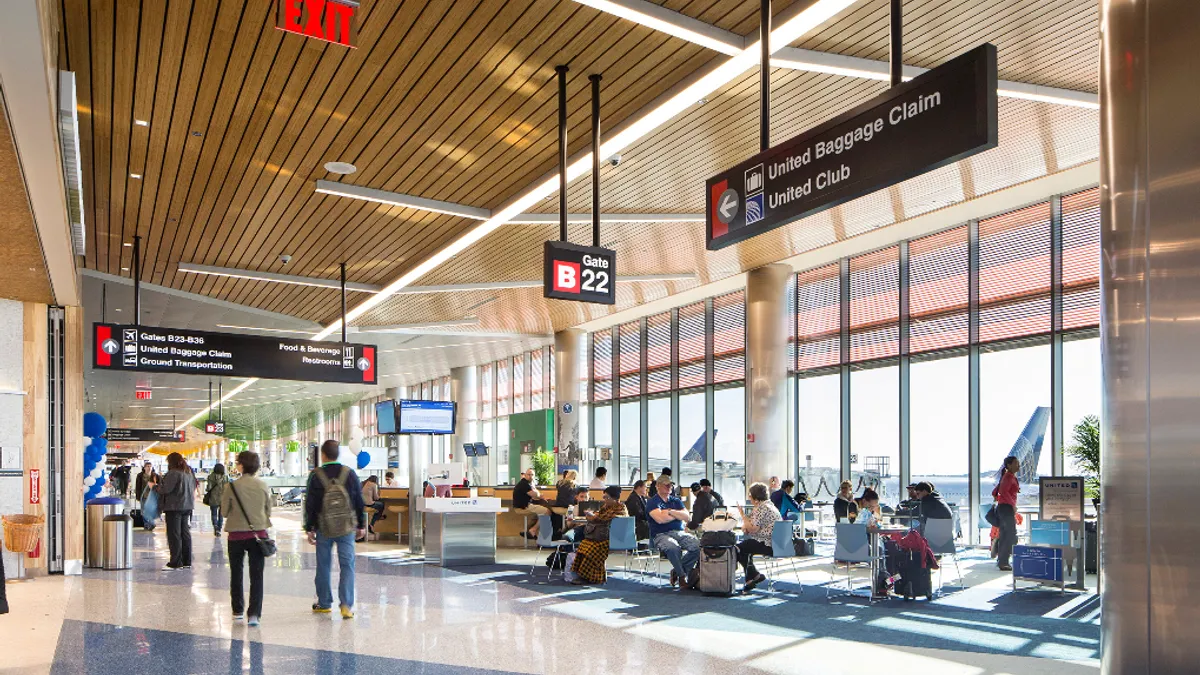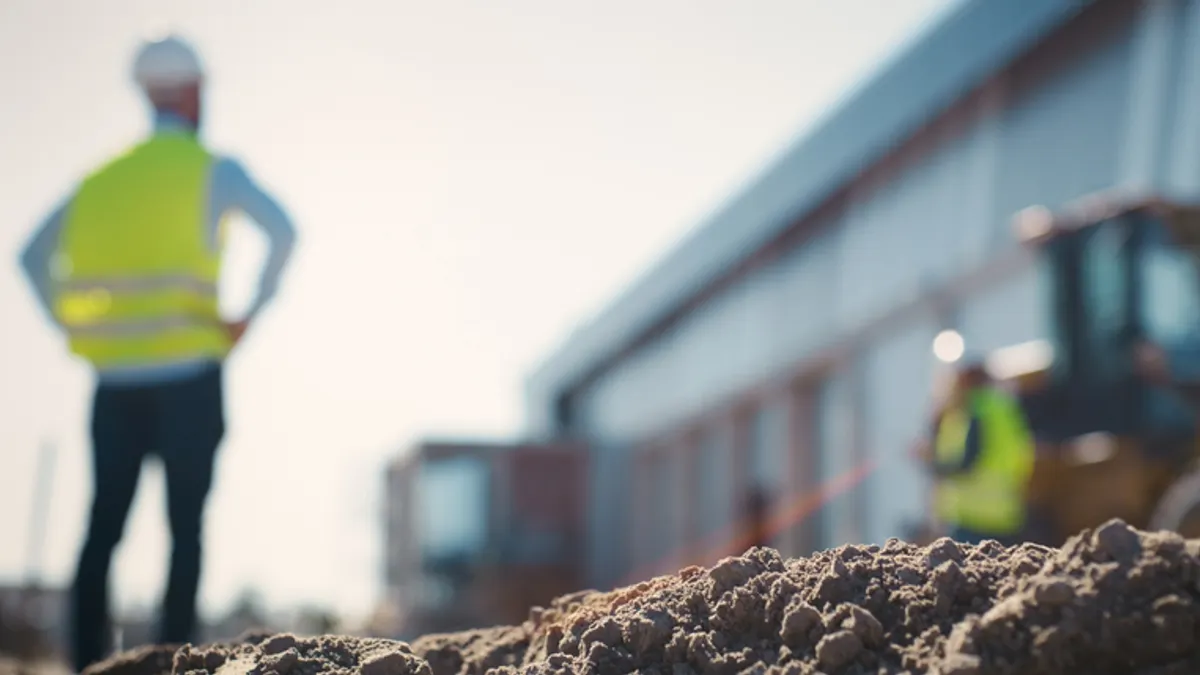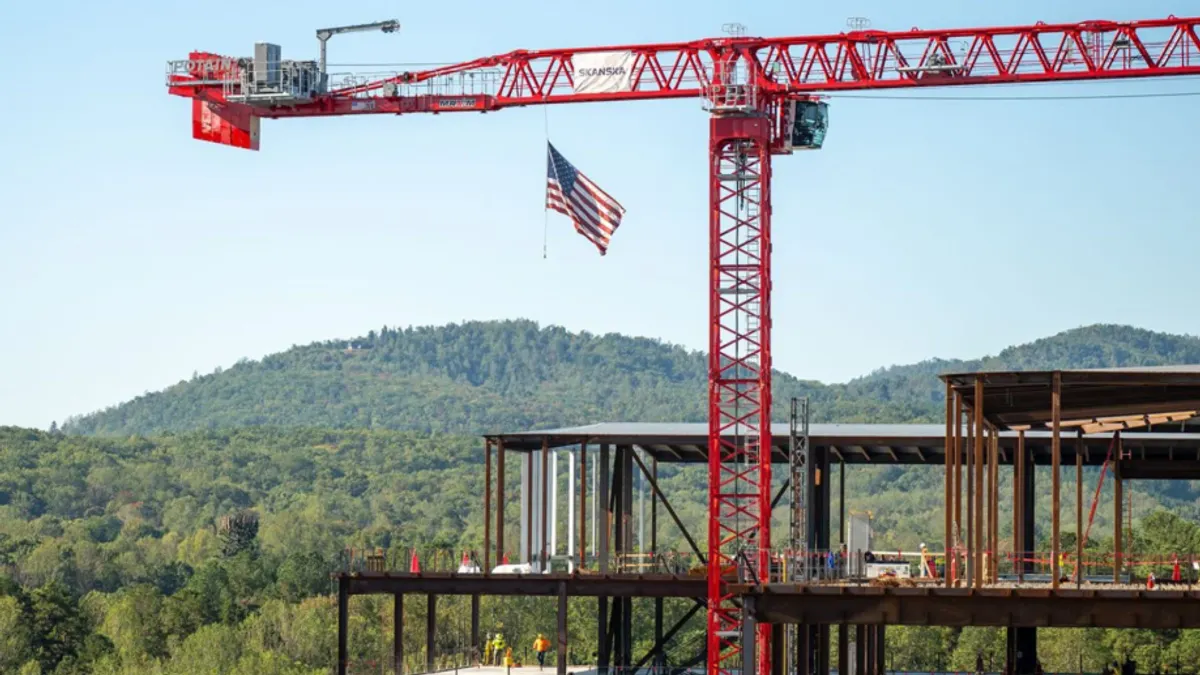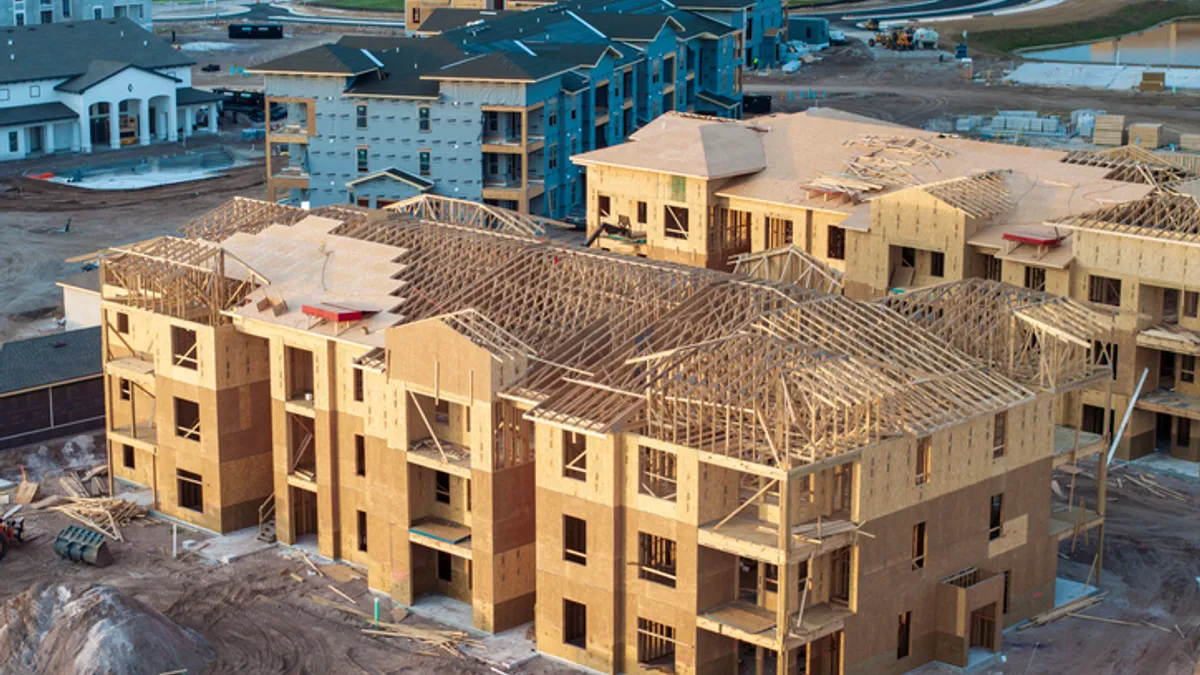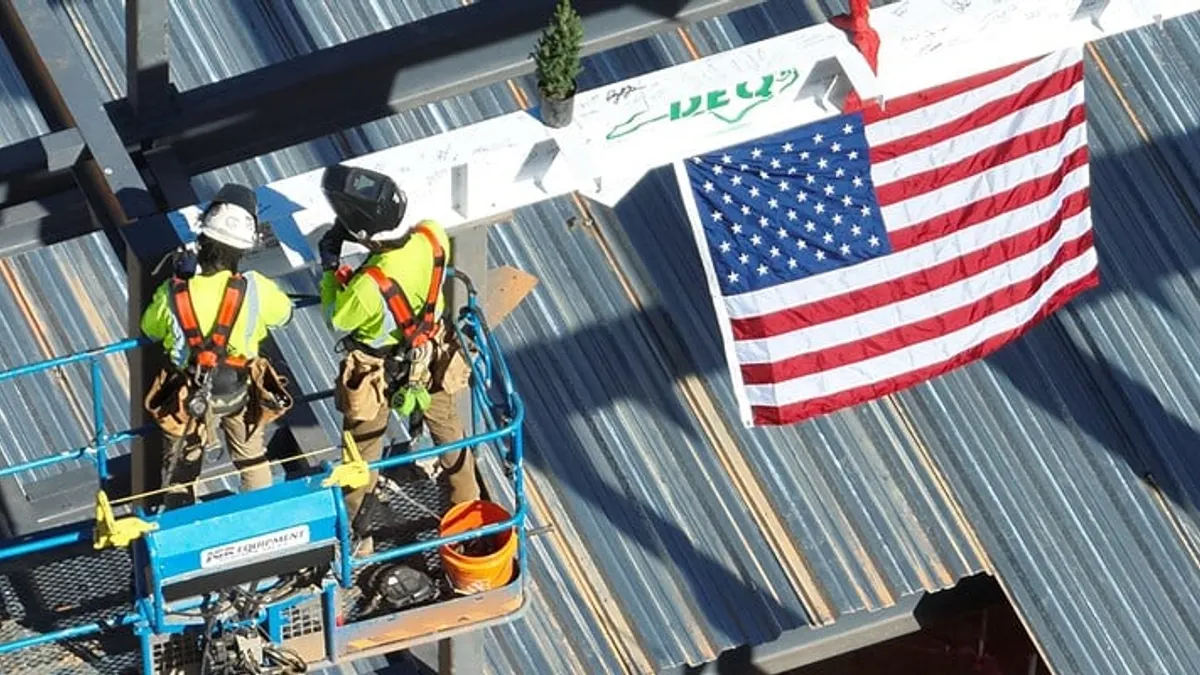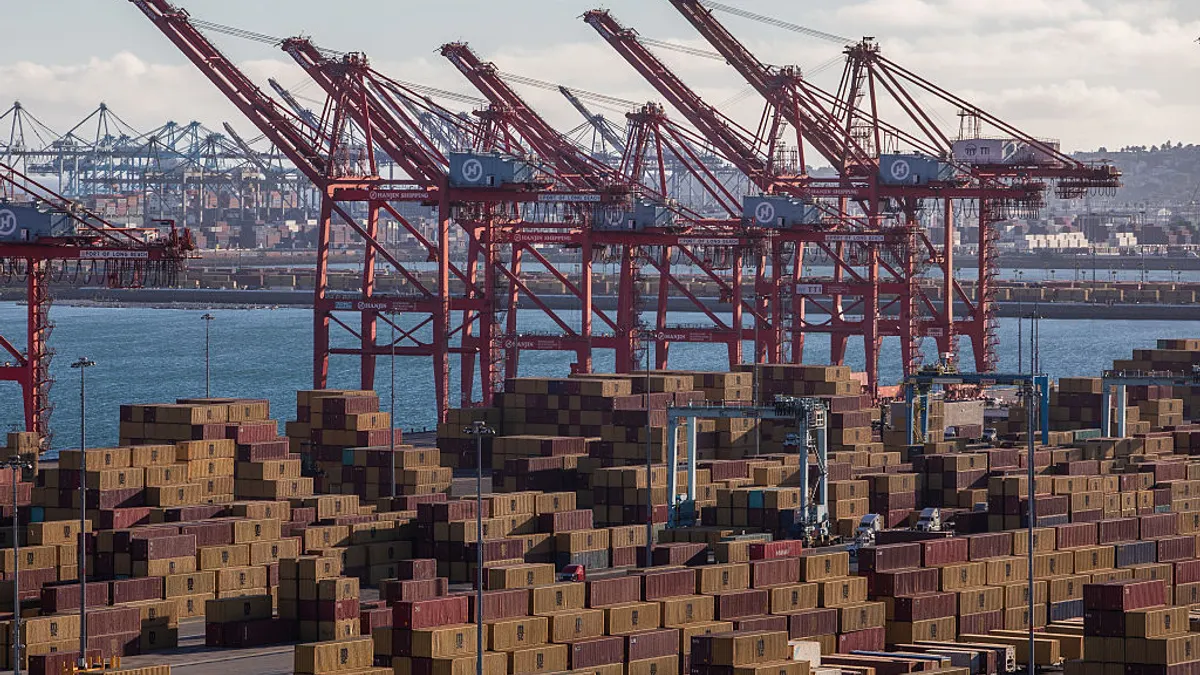There’s no question that the aviation construction market has faced some headwinds since the coronavirus pandemic arrived in the U.S.
In recent years, airports around the world have embarked on billions of dollars worth of expansion and modernization projects to help meet the increasing number of domestic and international travelers.
Hartfield-Jackson Atlanta International Airport, for instance, has had a 20-year, $6 billion expansion program in the works since 2016. The new interior and exterior upgrades, additional hotel space and a sixth runway were to allow the airport some more room in order to better accommodate the 100 million passengers it sees per year, but passenger traffic has dropped considerably since the start of the COVID-19 pandemic.
The latest Bureau of Transportation Statistics numbers show that the slide began in March and that April was the worst month for U.S. airline travel, down 96% from the same month in 2019. October travel by air in the U.S. was down by a seasonally adjusted 63.1% year over year, representing an upward trend from earlier in the year but still well off the mark.
The reason these figures are critical to the construction industry, said Sam Sleiman, executive vice president of Suffolk’s national transportation unit, is that airports and airlines rely a great deal on passenger-generated revenue to fund their capital projects, and not only have passenger trips decreased since early 2020, but airlines are lowering their fares.
The average U.S. domestic air fare in the third quarter of 2020, according to the BTS, dropped to $245, the lowest figure, adjusted for inflation, since at least 1995. The previous low was $262 in the second quarter of last year.
Other passenger-related sources of revenue that airports typically use for expansion projects have also decreased, Sleiman said, and that includes parking fees, concessions and the passenger facility charge, which has been capped at $4.50 per leg with a maximum of $18 per roundtrip since 2000.
Congress could decide that now is time to raise the PFC cap, he said. The Rand Corp., which conducted a congressionally mandated study on how federal policies impact airports’ ability to draw enough revenue in order to pay for necessary capital programs, suggested a $7.50 PFC indexed for inflation.
The other challenge, Sleiman said, is that many airport projects are financed through bonds backed by future PFC charges and those other sources of revenue.
“That’s why many projects in a lot of airports have been put on hold until they see passenger recovery,” he said. “The revenue is gone (or) severely impacted by the pandemic, and if the airport cannot bond against the revenue, they cannot get more money.”
On top of that challenge, Sleiman said, some airports have projects underway already financed by bond sales using that anticipated revenue and must still pay the bonds. In May, Fitch Ratings adjusted its outlook and/or ratings for PFC-backed and other types of revenue bonds at several U.S. airports.
International demand
The airports that rely heavily on international travel, said Jeffrey Fucigna, Skanska USA vice president, regional design-build manager and director of aviation and transportation, are facing significant challenges to revenue streams.
“There is an unprecedented crisis on the international demand side,” he said. “Their aircraft are flying virtually empty.”
As a result, Fucigna said, many construction projects related to international travel are being delayed or reduced in scope moving forward.
Airports and airlines that have the cash on hand, however, could be in a better position, he said, to see the right project through.
Empty terminals or ones with lower-than-average traffic could pay off in cost-effectiveness as long as coronavirus testing and other safeguards are factored in.
“Responsible contractors have safety protocols in place to assure project sites remain safe,” he said.
What's ahead
In fact, said Jay Fraser vice president and general manager of Turner Construction Co.’s aviation group, a company project at the Atlanta airport that involves elevator and escalator elements in an existing concourse is moving ahead and taking advantage of lower passenger volume.
Projects that fall into the area of operations and maintenance are likely to move forward as well, Fucigna said.
For example, the Federal Aviation Administration announced in September that it was giving $335 million in safety and infrastructure grants to 80 airports in 25 states for projects such as runway construction, taxiway and runway repair, lighting and signage, airport master plan studies and perimeter fencing. In December, the FAA also announced that it would distribute $2 billion in COVID-19 relief to eligible U.S. airports and concessions at those airports to prevent, prepare for and respond to the public health emergency.
Ready for takeoff?
In reality, the large projects that have been the hallmark of airport construction for the last several years likely will be limited until passenger traffic gets back to pre-COVID-19 levels. Domestic travel could be back to normal in 2023 and international travel in 2024, according to the Airports Council International.
According to Fraser, airports are planning their projects now for traffic levels 10 and 15 years out, a longer-term vision that is not totally reliant on passenger volume making a full rebound right away. The fact that they are still planning speaks to a confidence that passengers won’t stay away for too long.
Prior to the pandemic, he said, the airlines and airports had several years in a row of strong operating revenue and earnings performance. There are also about $100 billion of necessary airport improvements yet to be made.
“COVID has not made that go away,” Fraser said. “I think airports and airlines are going to win in the end.”


